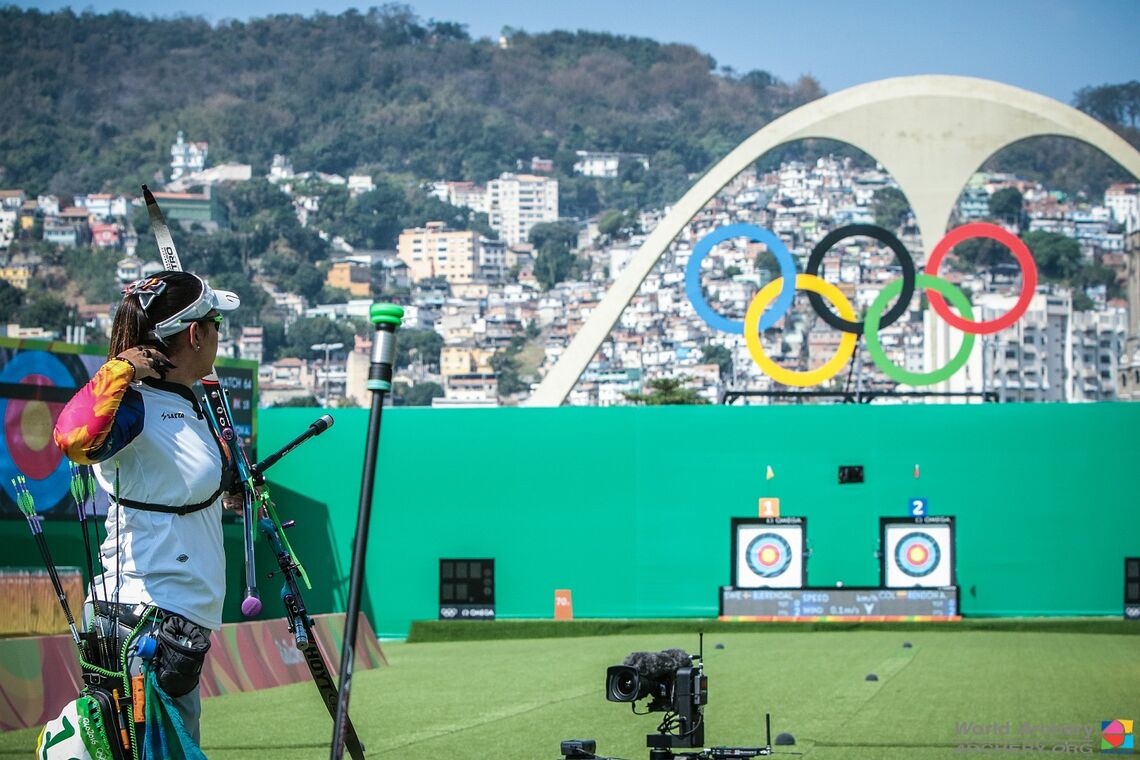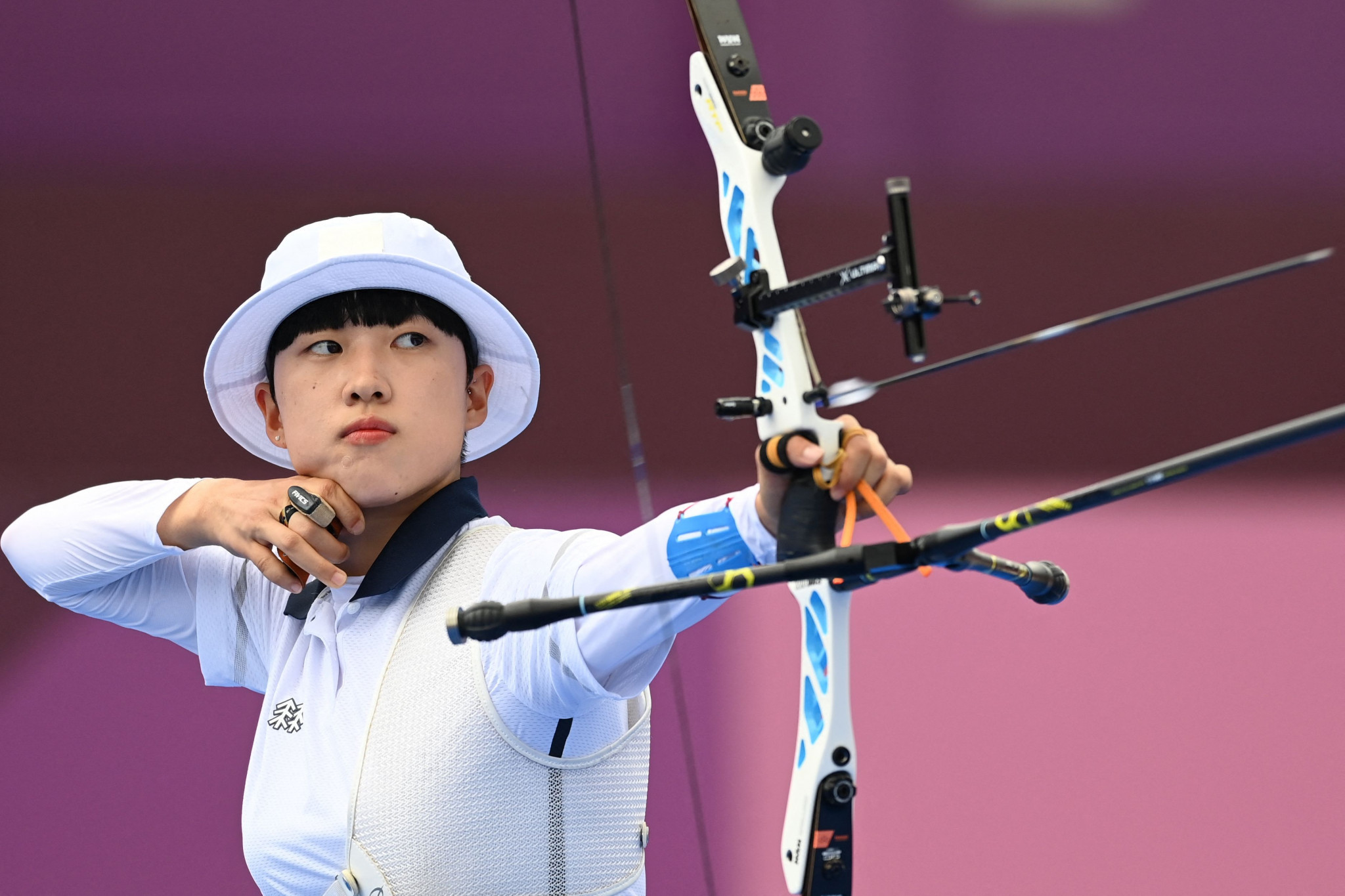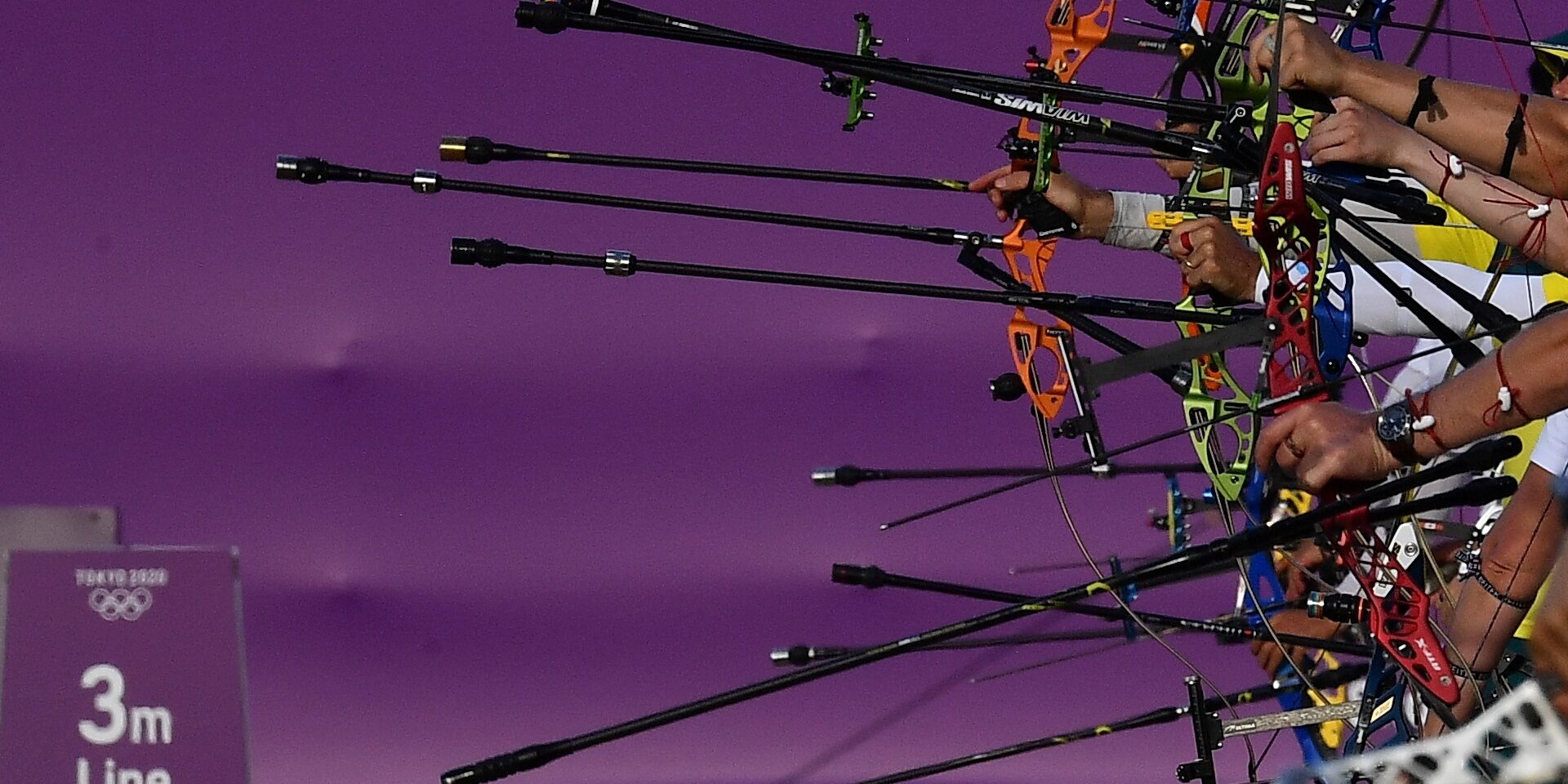There are five archery events in the Olympics. These include men’s individual, women’s individual, men’s team, women’s team, and mixed team.
Archery is a precision sport that has been a part of the Olympic Games since 1900. The competition tests an archer’s accuracy, concentration, and skill. Olympic archery features five events: men’s individual, women’s individual, men’s team, women’s team, and mixed team.
Each event requires participants to shoot arrows at a target from a distance of 70 meters. The mixed team event, introduced in recent years, pairs one male and one female archer from each country. This variety of events ensures that archery remains an exciting and dynamic part of the Olympic program, engaging fans and showcasing diverse talents.
The Evolution Of Archery In The Olympics
Archery has a rich history in the Olympic Games. It started with humble beginnings and grew into a celebrated event. Over the years, the sport faced challenges but always found its way back. Let’s delve into its fascinating evolution.
From Humble Beginnings To A Mainstay Event
Archery made its first appearance at the 1900 Paris Olympics. At that time, the sport had simple rules and a small number of participants. The early competitions were straightforward. Archers aimed at targets from varying distances.
By 1920, archery had become more structured. The event featured multiple rounds and different types of competitions. This evolution brought more excitement and skill to the sport. Archers from various countries started to participate, increasing the event’s popularity.
The Removal And Reinstatement Of Archery
Despite its growing popularity, archery was removed from the Olympics after 1920. The main reason was the lack of standardized rules across different countries. This made it difficult to hold fair competitions.
In 1972, archery made a triumphant return to the Olympic Games. The reinstatement came with standardized rules and modern equipment. This change ensured a fair and exciting competition for all participants.
Since then, archery has been a mainstay in the Olympics. It now features five events: Men’s Individual, Women’s Individual, Men’s Team, Women’s Team, and Mixed Team. These events showcase the skills and precision of archers from around the world.

Credit: www.worldarchery.sport
Current Archery Events At The Olympics
Archery at the Olympics showcases a mix of individual and team events. These events test the skills and coordination of the world’s best archers. With distinct categories for men, women, and mixed teams, the competition is always thrilling.
Individual Prowess: Men’s And Women’s Events
The individual events highlight each archer’s skill and precision. There are separate categories for men and women, ensuring fair competition.
- Men’s Individual Event: Archers compete head-to-head in a series of elimination matches.
- Women’s Individual Event: Female archers showcase their talent in a knockout format.
In both events, the best-of-five sets determine the winner. Each set consists of three arrows per archer. The archer with the highest score after five sets wins.
Team Synergy: Men’s, Women’s, And Mixed Team Competitions
Team events emphasize coordination and unity. Teams of three archers represent their countries in these thrilling matches.
| Event | Description |
|---|---|
| Men’s Team Event | Three male archers from each country compete together. |
| Women’s Team Event | Teams of three female archers aim for gold. |
| Mixed Team Event | One male and one female archer form a duo. |
In team events, each match consists of a maximum of four sets. Each set includes six arrows, with each archer shooting two arrows. The team with the most points wins the set. Winning the majority of sets secures victory in the match.
The Recurve Bow: Sole Equipment Of Olympic Archery
The recurve bow stands as the exclusive equipment in Olympic archery. Its elegant design and historical significance make it a unique choice. Archers at the Olympics showcase their skills using this bow, making it central to the competition.
Characteristics Of The Olympic Recurve Bow
The Olympic recurve bow has distinct features. It is crafted to offer precision and stability. Here are some key characteristics:
- Riser: The central part of the bow, usually made of aluminum or carbon.
- Limbs: Made from wood, fiberglass, or carbon, they store the bow’s energy.
- String: Typically made from durable synthetic materials.
- Stabilizers: Help balance the bow during the shot.
- Sight: Assists the archer in aiming accurately.
Each component is essential for optimal performance. The design ensures the bow is lightweight yet powerful. This balance is crucial for hitting targets with precision.
Why Only The Recurve Bow Is Used
The recurve bow has a rich history in the Olympics. It is the only bow type featured in the Games. Here’s why it stands out:
- Historical Significance: The recurve bow has ancient roots, used in early Olympic Games.
- Standardization: Using one bow type ensures a level playing field.
- Technical Challenge: The recurve bow demands skill, precision, and practice.
These factors make the recurve bow the preferred choice. It tests the archer’s ability and consistency. This enhances the competition’s intensity and fairness.
Understanding the recurve bow’s role highlights its importance. It remains an integral part of Olympic archery, representing both tradition and skill.

Credit: archerygb.org
Breaking Down The Competition Format
Understanding the competition format in Olympic archery is crucial for fans and participants. The events are meticulously structured to ensure fairness and excitement. Let’s explore the format for individual and team events in detail.
The Set System In Individual Events
Individual archery events follow a best-of-five set system. Each archer shoots three arrows per set. The maximum score for each arrow is ten points. The archer with the highest total score in a set wins that set and earns two points. If both archers score the same, they each receive one point.
If an archer reaches six points first, they win the match. If the match is tied after five sets, a one-arrow shoot-off determines the winner. The archer whose arrow is closest to the center wins the shoot-off.
Team Events: Coordination And Scoring
Team events involve three archers from the same country. Each team competes in a maximum of four sets. Every archer shoots two arrows per set, totaling six arrows per set for the team.
The scoring follows similar rules to individual events. The team with the highest score in a set earns two points. If the scores are tied, each team gets one point. The first team to reach five points wins the match.
Coordination among team members is key. Teams must manage their time and ensure each archer shoots effectively. Communication and strategy play significant roles in achieving high scores and winning matches.
Qualifying For Olympic Archery
Archery is a prestigious event in the Olympics. Getting there is tough. The journey involves rigorous qualification rounds. Archers must meet strict criteria to compete. Let’s explore how archers qualify for this elite competition.
The Road To The Olympics: Qualification Rounds
Archers must pass several rounds to qualify for the Olympics. The qualification process is intense. It begins with national competitions. Only top performers move to international rounds. The final goal is to secure a spot in the World Archery Championships. Here, archers compete for Olympic spots.
Qualification rounds include:
- National competitions
- Continental championships
- World Archery Championships
Each round gets harder. Archers must maintain top performance throughout. Only the best reach the Olympics.
Criteria For Archers And Teams To Qualify
Archers must meet specific criteria to qualify. Individual archers need to achieve minimum qualifying scores. These scores are set by the World Archery Federation. Scores vary for men and women.
| Category | Minimum Qualifying Score |
|---|---|
| Men | 640 points |
| Women | 605 points |
Teams also have criteria. Each country can send a team of three archers. Teams must qualify through team events. The top eight teams from the World Archery Championships qualify for the Olympics.
Qualification criteria include:
- Minimum qualifying scores for individuals
- Top eight teams from World Archery Championships
- Performance in continental championships
Meeting these criteria is crucial. Only then can archers compete in the Olympics. The journey is challenging but rewarding. Archers who make it are among the world’s best.
Records And Achievements
Archery at the Olympics has a rich history of records and achievements. Archers from around the world compete fiercely, aiming to set new records and achieve personal bests. Let’s explore some of the most notable Olympic records and the world record holders in Olympic archery.
Notable Olympic Records In Archery
The Olympic archery events have seen some incredible records. South Korea stands out with its unparalleled success in archery. Here are some notable records:
- Most Gold Medals: South Korea holds the record for the most gold medals in Olympic archery.
- Highest Individual Score: Kim Woo-jin of South Korea set the highest individual score with 700 points in Rio 2016.
- Fastest Match Win: An San of South Korea holds the record for the fastest match win in Tokyo 2020.
World Record Holders In Olympic Archery
Many archers have set world records during the Olympic Games. Their achievements are a testament to their skill and dedication. Here are some world record holders:
| Archer | Country | Record |
|---|---|---|
| Kim Woo-jin | South Korea | Highest Individual Score – 700 points |
| An San | South Korea | Fastest Match Win |
| Im Dong-hyun | South Korea | Highest Team Score |
These records and achievements highlight the excellence and competitive spirit in Olympic archery. The quest for records continues as new talents emerge, aiming to leave their mark in the history of the sport.
Olympic Archery Venues And Conditions
The venues and conditions for Olympic archery events are crucial. They influence the performance of athletes. From historical settings to modern arenas, each venue has its unique charm and challenges.
Iconic Venues And Their Impact
Many iconic venues have hosted Olympic archery. Lord’s Cricket Ground in London is a notable example. This venue added a rich historical feel to the archery events in 2012.
The Sambadrome Marquês de Sapucaí in Rio de Janeiro provided a vibrant atmosphere in 2016. This venue is usually known for its carnival parades. It brought an energetic vibe to the archery events.
Yumenoshima Park Archery Field in Tokyo was the venue for the 2020 Olympics. This modern venue offered state-of-the-art facilities. It ensured that athletes performed at their best.
Weather And Environmental Factors
Weather conditions are a significant factor in archery. Wind can greatly affect an archer’s performance. Even a slight breeze can change the arrow’s path.
Rain can also pose challenges. Wet conditions make it harder to maintain grip and focus. Archers need to be prepared for any weather.
Temperature is another important factor. Extreme heat or cold can affect equipment and concentration. Archers need to adapt to varying temperatures to perform well.
| Venue | Year | Unique Features |
|---|---|---|
| Lord’s Cricket Ground | 2012 | Historical setting |
| Sambadrome Marquês de Sapucaí | 2016 | Vibrant atmosphere |
| Yumenoshima Park Archery Field | 2020 | Modern facilities |
- Wind: Alters arrow trajectory.
- Rain: Challenges grip and focus.
- Temperature: Affects equipment and concentration.

Credit: www.insidethegames.biz
Future Of Archery At The Olympics
The future of archery at the Olympics promises excitement and innovation. The sport continues to evolve, introducing new elements and technologies.
Potential Changes And New Event Categories
Archery could see new event categories in future Olympics. These changes aim to attract a broader audience and keep the sport dynamic.
- Mixed Team Events: These events have grown in popularity, offering a fresh dynamic.
- Compound Archery: Currently not an Olympic event, this could be introduced soon.
- Youth Competitions: To encourage young archers, junior categories might be added.
Technological Advancements And Their Influence
Technological advancements play a significant role in modernizing archery. These innovations enhance both the athlete’s performance and the spectator’s experience.
| Technology | Influence on Archery |
|---|---|
| Electronic Scoring Systems | Ensures accurate and quick scoring, reducing human error. |
| High-Tech Bows | Improves precision and consistency for archers. |
| Wearable Technology | Monitors athlete’s vitals and performance metrics. |
Broadcasting Enhancements: Advanced cameras and augmented reality offer better viewing experiences. These technologies bring fans closer to the action.
Frequently Asked Questions
How Many Types Of Archery Are There In The Olympics?
There is one type of archery in the Olympics: recurve archery.
How Many Rounds Are In The Olympic Archery?
Olympic Archery consists of five rounds in the individual events. Each match follows a best-of-five set format.
Will Archery Be In The 2024 Olympics?
Yes, archery will be in the 2024 Olympics. There will be five archery events in Paris.
Why Was Archery Removed From The Olympics?
Archery was removed from the Olympics after 1920 due to inconsistent rules and lack of international standardization.
How Many Archery Events In The Olympics?
There are five archery events in the Olympics.
Conclusion
Understanding the number and types of archery events in the Olympics is essential for any enthusiast. There are individual, team, and mixed team categories. This diversity adds excitement and variety to the competitions. Stay tuned for more updates and insights on Olympic sports.
Keep exploring our blog for more fascinating content.





